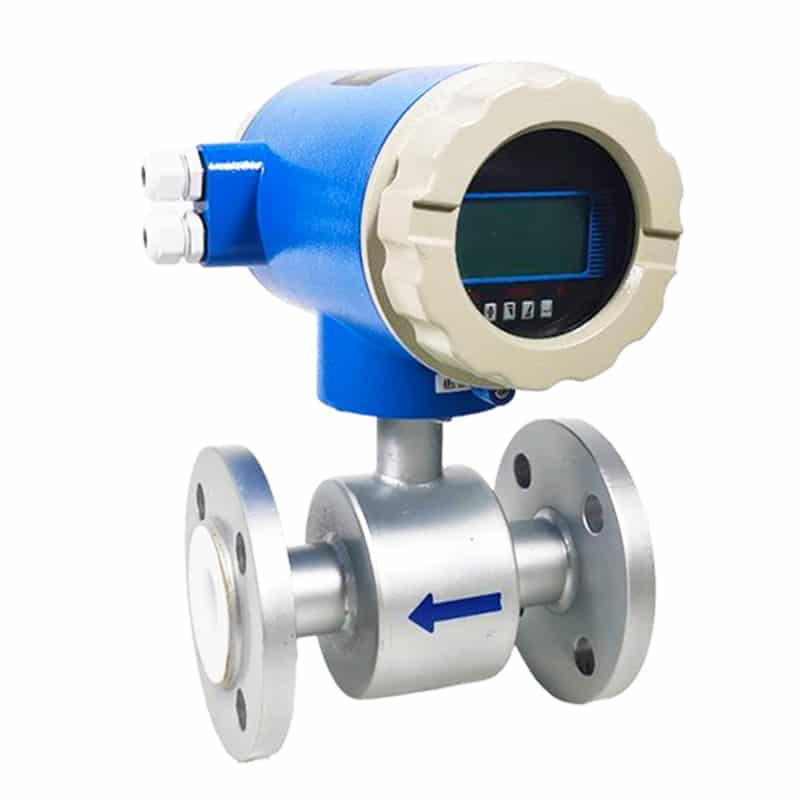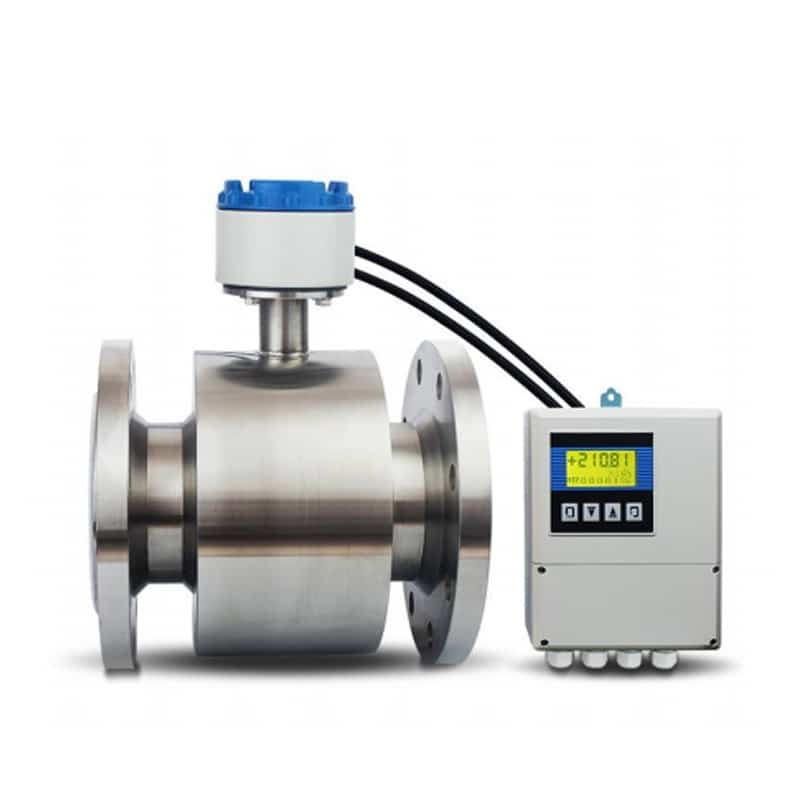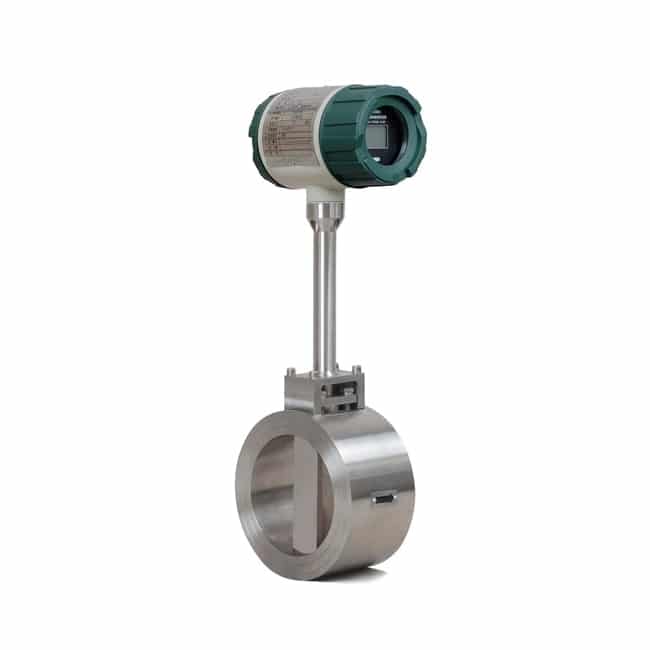What is solvent flow meter?
Solvent flow meter is a flow meter that measures the volume or mass flow of a solvent. It is very important to accurately measure the amount of solvent in industrial production processes. Solvents are divided into organic solvents and inorganic solvents according to their chemical composition. Solvents are commonly used as raw materials in various industries such as coatings, paints and dyes.
Choosing a flow meter for chemical service can be tricky. We need to know exactly what the fluid is and the operating conditions. Of particular importance are temperature and line pressure. The more information you give us, the better we can do in selecting the right flow meter for your application.
What is a chemical solvent?
Solvents are substances that can dissolve other solids, liquids, gases and other solutes. The most common solvent in our daily life is water. Generally solvents have low boiling points, are volatile and cannot react chemically with solutes. Solvents are usually colorless and transparent liquids with a distinctive odor.
Solvents play a very important role in adhesives.
Organic solvents are a large group of organic compounds that are widely used in life and production. They have a small molecular weight and are liquid at room temperature. Organic solvents include a variety of substances such as paraffins, olefins, alcohols, aldehydes, amines, esters, ethers, ketones, aromatic hydrocarbons, hydrogenated hydrocarbons, terpenes, halogenated hydrocarbons, heterocyclic compounds, nitrogen-containing compounds, sulfur-containing compounds, etc. Compounds, etc. Most of them are toxic to humans.
Solvents are usually found in paints, adhesives, varnishes and cleaners. Commonly used organic solvents are DMF, cyclohexanone, acetonitrile, acetic acid, methyl acetate, ethyl acetate, isopropyl alcohol, vinyl acetate, cyclohexane, n-hexane, n-heptane, etc.
Organic solvents are a class of organic compounds that can dissolve some substances insoluble in water (such as grease, wax, resin, rubber, dye, etc.). It is characterized by its liquid state at room temperature and pressure. It has greater volatility. During the dissolution process, the properties of solute and solvent remain unchanged.
There are many types of organic solvents, which can be divided into 10 major categories according to their chemical structure.
- Aromatic hydrocarbons: benzene, toluene, xylene, etc.
- Aliphatic hydrocarbons: pentane, hexane, octane, etc.
- Alicyclic hydrocarbons: cyclohexane, cyclohexanone, toluene cyclohexanone, etc.
- Halogenated hydrocarbons: chlorobenzene, dichlorobenzene, dichloromethane, etc.
- Alcohols: methanol, ethanol, isopropanol, etc.
- Ethers: ethyl ether, propylene oxide, etc.
- Esters: methyl acetate, ethyl acetate, propyl acetate, etc.
- Ketones: acetone, methyl butanone, methyl isobutyl ketone, etc.
- Diol derivatives: ethylene glycol monomethyl ether, ethylene glycol monoethyl ether, ethylene glycol monobutyl ether, etc.
- Other: acetonitrile, pyridine, phenol, etc.
Considerations for choosing a solvent flow meter
Don’t just ask for body material and expect the gauge to work properly. The body is simply a pressure vessel containing a working mechanism. The materials in the body must be carefully specified. Always check the list of materials in the specifications. If you experience chemical compatibility problems, it will be in the working mechanism, not in the body.
Do not assume that a plastic-bodied gauge will work for you simply because you are using PVC lines. PVC and CPVC can handle chemicals that will melt a plastic-bodied gauge in seconds. Plastic body gauges designed for water supply are made of polyacetal and polycarbonate, not PVC. they cannot handle low pH fluids and are subject to solvent attack in some cases.
Viscosity considerations and lack of capillary seal
The application of mechanical instruments requires consideration of fluid properties. Mechanical gauges with oscillating pistons, pendulums (pendulums) or similar measuring elements are called volumetric gauges. However, what makes it “positive” is the capillary seal between the measuring element and the sidewall or engaging parts. If you are dealing with low viscosity fluids, i.e. alcohol, toluene, MEK, etc., you lack the viscosity to form a good capillary seal. This will show up as leaks around the measuring element and will usually cause the meter to read low.
Low lubricity and pressure drop
Positive displacement flow meters have surfaces in the measurement chamber that are in contact with each other. In a chapter moving disc (pendulum), the center ball rides in a formed cup, in an oscillating piston flowmeter, the center pin is in contact with the roller and the piston diaphragm rides on the hub. This means that the non-lubricated fluid allows these parts to drag against each other, which increases the frictional load. This loading creates higher pressure drops and increases wear on the meter.
Flow meters for measuring solvents
The best method for such fluids is to use turbine flow meters. The turbine rotor is suspended by ball or sleeve bearings and has virtually no drag coefficient. This allows turbine flow meters to be used for low viscosity as well as non-lubricated fluids. Another option is the oval gear flow meter (PD flow meter), which is a positive displacement device using a double oval rotor. The rotors inherently provide a better seal because their gear design captures a pocket of fluid at the capillary sealing point, thus preventing leakage around the measuring element. Electromagnetic flow meters can also be used, and they both allow for highly accurate and efficient solvent flow measurement.
Turbine flowmeter
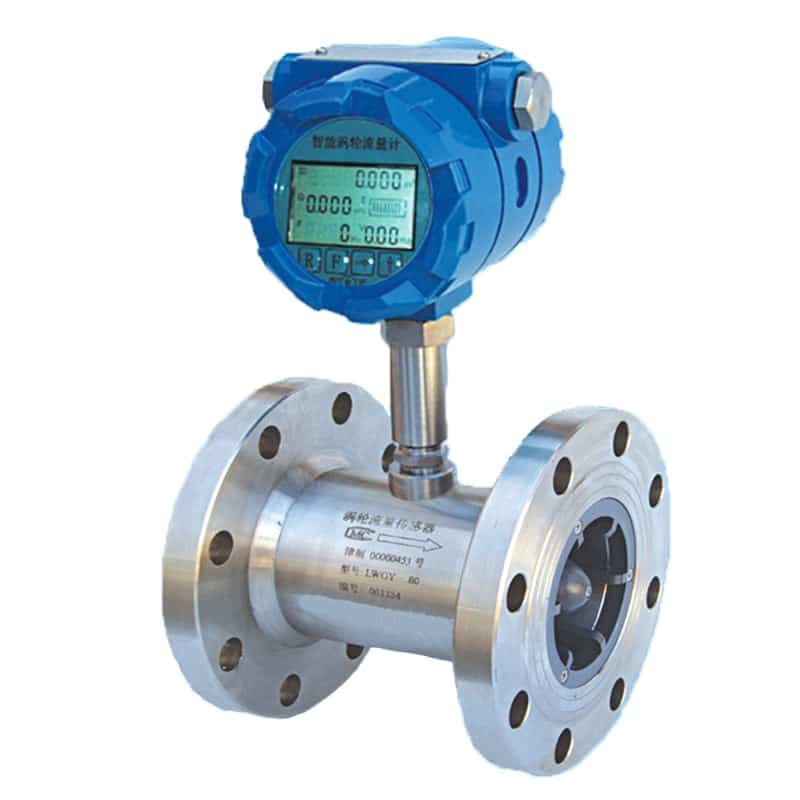
Turbine flow meters are velocity flow meters, also known as impeller flow meters. It can be used to measure the instantaneous and cumulative flow rate of solvent liquids. It has the advantages of high accuracy, good repeatability, simple structure, few moving parts, high pressure resistance, wide measuring range, small volume, light weight, small pressure loss, easy maintenance, etc.
Turbine flowmeter is widely used for flow measurement: petroleum, chemical industry, metallurgy, organic liquid, inorganic liquid, liquefied gas, natural gas, gas and low temperature fluid. Turbine flowmeter signal can be divided into pulse signal or current signal (4-20mA).
Oval gear flow meter
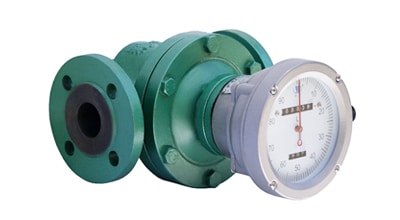
Oval gear flow meter as a mechanical flow meter is a common type of volumetric flow meter. It can measure the volume flow of high viscosity and corrosive solvent fluids. It has several advantages.
- High measurement accuracy.
- Installation piping conditions have no effect on the measurement accuracy.
- Can be used for high viscosity fluids.
- Large range.
- Direct reading meter can obtain the totalization and total directly without external energy.
- Clear and simple to operate.
Magnetic flowmeter
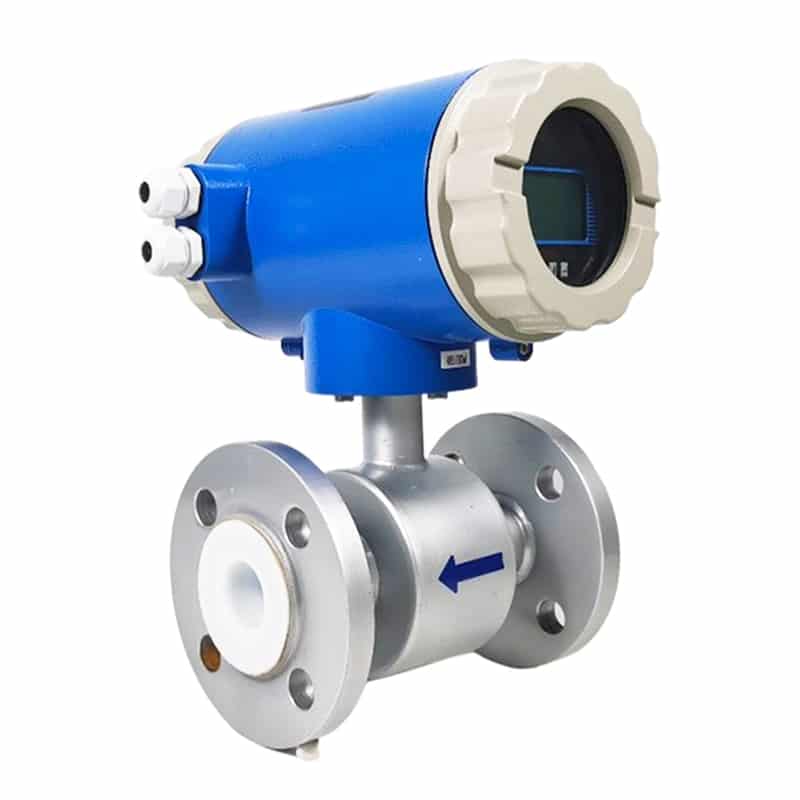
Magnetic flow meter is a flowmeter that measures the flow of conductive solvent fluids. Abbreviated as EMF, it is also called electromagnetic flowmeter. It is a volumetric flow meter. The electromagnetic flow meter measures the velocity of a conductive fluid passing through a pipe or conduit. Electromagnetic flowmeter is the best flowmeter choice for the wastewater treatment industry.
Gear flow meter
The gear flow meter is a miniature digital volumetric flow meter. Can measure very small flow rates and quantify small volumes of liquid. Resistant to high and low temperatures (-196°C – 200°C).
The gear flow meter is made of stainless steel and is used for accurate continuous or intermittent measurement of the flow rate or instantaneous flow of liquids. It is especially suitable for flow measurement of heavy oil, polyvinyl alcohol, grease and other high viscosity media. It can measure the viscosity of fluids up to 10,000 Pa.s.
Generally speaking, we can choose the appropriate flowmeter according to the different characteristics of chemical solvents. For example, high viscosity solvents are recommended to use gear flow meters. For example, for corrosive solvents, electromagnetic flowmeter can be used. If you need to reduce the cost, you can choose turbine flowmeter.
Of course need to be based on our actual measurement conditions, such as media temperature, pipe temperature, pressure, etc.. Select the appropriate flowmeter to achieve accurate measurement.
Featured products
More extended reading on flow meters:
Flow meter vs flow transmitter
Select the right irrigation flow meter
Electronic flow meter
Hot water flow meter
Chilled water flow meter

